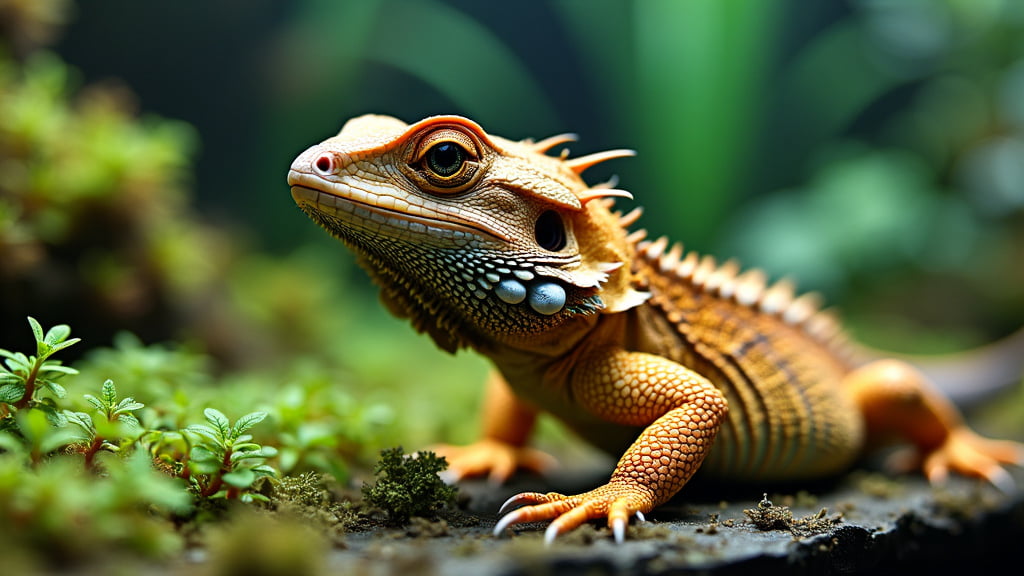Introduction
When it comes to setting up the perfect home for your bearded dragon, one of the most crucial decisions you’ll make is choosing the right substrate. The substrate you choose doesn’t just affect the aesthetics of your tank; it can significantly impact your dragon’s health and well-being. With various options available and tank sizes to consider, how do you make the best choice? As someone who has reared bearded dragons for years, I can share my firsthand experiences and insights to help you navigate this crucial element of reptile care.
Before we dive in, remember that any health concerns related to your bearded dragon should always be discussed with a qualified veterinarian.
Different Tank Sizes and Their Requirements
Small Tanks (10-20 gallons)
Best Substrate Options
A small tank’s limited space emphasizes the need for a substrate that maximises safety and ease of maintenance. Here are some top choices:
Paper Towels: Practical and hygienic, paper towels are my go-to option for hatchlings and juveniles. They are easy to replace and make monitoring your dragon’s droppings simple.
Reptile Carpet: This washable and reusable option can give your tank a more natural look. However, ensure you have a spare to use while one is being cleaned.
Non-Adhesive Shelf Liner: Durable and easy to clean, it’s a more aesthetically pleasing option than paper towels without sacrificing hygiene.
Things to Avoid
Loose Substrates: Avoid sand, wood chips, and gravel. These can cause impaction if ingested and are challenging to maintain in a smaller space.
Medium Tanks (40-55 gallons)
Best Substrate Options
For medium tanks, you have a bit more flexibility. My dragons have thrived with substrates that balance ease of maintenance and natural appeal:
Tiles: Slate or ceramic tiles not only look great but also provide a solid surface that’s easy to clean and helps wear down your dragon’s nails.
Eco Earth Mixed with Play Sand: This combination mimics a natural environment while minimizing the risk of impaction. However, consistent spot cleaning and regular substrate changes are vital. Explore more substrate options.
Setting Up and Maintaining the Substrate
Layering Technique: When using a mix like Eco Earth and play sand, maintain a ratio of 70% Eco Earth to 30% play sand. This mix offers comfort and reduces the risk of compaction.
Large Tanks (75-120 gallons)
Best Substrate Options
Large tanks allow you to get creative. My personal favourite setups blend aesthetic appeal with practical function:
Bioactive Substrate: If you’re an advanced keeper, consider a bioactive substrate. This setup includes a mix of soil, sand, and clay, providing a naturalistic environment. It requires a clean-up crew of microfauna to help break down waste.
Excavator Clay: This substrate allows for burrowing, mimicking the bearded dragon’s natural habitat. It dries hard, reducing the chance of ingestion.
Maintenance Tips for Large Tanks
Regular Spot Cleaning: No matter the substrate type, daily spot cleaning is essential.
Monthly Substrate Change: Depending on your substrate choice, a monthly complete substrate change or thorough deep cleaning is necessary.
Key Considerations for All Tank Sizes
Substrate Depth
Hatchlings and Juveniles: A shallow layer of substrate is ideal to prevent impaction and make cleaning easier.
Adults: A deeper substrate allows for more natural behaviours such as digging and burrowing, especially in larger tanks. Learn more about substrate options.
Health and Safety
Monitor Behaviours: Watch for any signs of substrate ingestion, and adjust if necessary.
Case Study: In my experience, all-natural substrates like crushed walnut shells led to frequent impaction issues. Switching to safer alternatives drastically improved my dragons’ health.
Cost and Practicality
Budget-Friendly Options: Paper towels and tiles are cost-effective and easy to maintain.
Long-Term Investments: Bioactive substrates may have higher initial setup costs but can be more economical over time due to self-sustaining elements.
Conclusion
Choosing the right substrate for your bearded dragon tank involves considering size, safety, and your level of experience. From simple paper towels for small tanks to complex bioactive setups for larger ones, there’s a range of options to fit every need and budget. Always prioritise your dragon’s health, keep cleanliness at the forefront, and consult a vet for any health-related issues. By optimising the substrate, you’re not only making your tank look fantastic but also ensuring a happier, healthier life for your bearded dragon.

